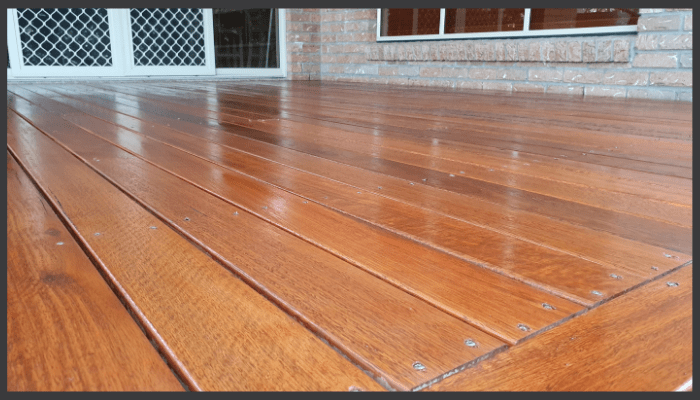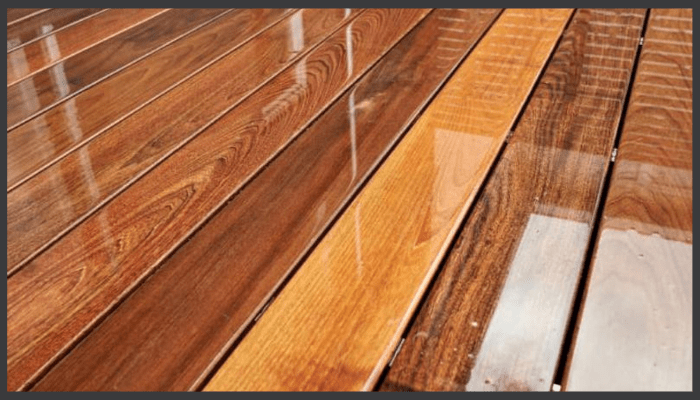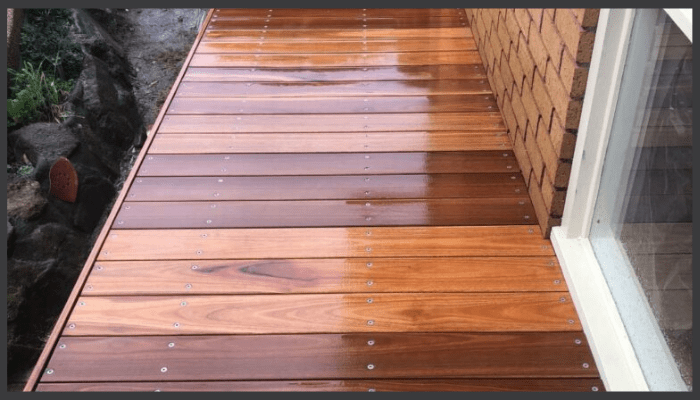Is Spotted Gum Decking Termite-Resistant? What You Need to Know
Is Spotted Gum Decking Termite-Resistant? What You Need to Know
Table of Contents:
- Is Spotted Gum Naturally Termite-Resistant?
- What Makes Spotted Gum Decking a High Durability Choice?
- Is Spotted Gum Decking Suitable for Bushfire Zones and Termite-Prone Areas?
- How to Ensure Your Spotted Gum Decking Remains Termite Resistant
- Comparing Termite Resistance: Spotted Gum vs Other Timber Species
- Real-World Performance: How Long Does Termite-Resistant Decking Last?
- Where to Find Termite-Resistant Spotted Gum Decking in Canberra
- FAQs About Spotted Gum and Termite Resistance
Spotted gum timber, harvested from the eucalyptus maculata species group, is a true representation of Australian hardwoods.
It's naturally attractive, incredibly strong, and aging better than your average timber. This isn't just a pretty face at the lumber yard.
It's the outdoor star homeowners trust for decking. It lasts and looks fantastic too.
This tough champion has a class 1 rating for above-ground use.
In timber terms, that means it can last more than 40 years without a problem.
The interlocked grain looks great, but it does more.
It's nature's reinforcement system, showcasing its natural durability .
It adds strength and helps resist environmental stress, making other timbers envious.
Is Spotted Gum Naturally Termite-Resistant?
At Pinus Sawmills, we often hear the burning question: "Is spotted gum decking termite resistant?" It comes up often!
Here's the short answer that'll make you sleep better: yes, spotted gum tells termites to buzz off.
This hardwood hero packs dense timber structure and natural oils that make it not very appetising to termites.
Termites are like Goldilocks in the insect world.
They like their wood soft, damp, and partly decomposed.
They look at spotted gum timber's high density and natural durability like vegetarians look at a steakhouse menu: with complete disinterest.
The timber is too tough and uninviting for their delicate tastes.
This makes their colonisation plans nearly useless.
However, let's keep it real: calling any timber completely termite-proof is like calling yourself completely stress-proof. Sure, spotted gum is tough and has great resistance.
Still, regular inspections and care are smarter than just trusting its strength.
What Makes Spotted Gum Decking a High Durability Choice?
Spotted gum thrives in tough Australian climates as if it owns the land.
It easily withstands weather challenges and boasts high density.
With a Janka hardness rating of about 11.0 kN, it’s truly the superhero of decking materials.
That tight, interlocked grain isn't just pretty; it's nature's security against wear and pests.
The real magic happens in the heartwood, where natural oils hang out.
These oils smell great. They tell termites, "This timber isn't for you." They also help keep moisture-related decay away. It's like having a built-in force field that works 24/7.
Spotted gum is also listed among bushfire resisting timbers under AS3959:2018, making it suitable for high-risk fire zones.
For families looking for timber decking that resists termites and lasts, spotted gum is a great choice.
It’s durable and lasts, with other options seeming weaker in comparison.
This isn't just decking; it's an investment in decades of "set it and forget it" outdoor living.
Is Spotted Gum Decking Suitable for Bushfire Zones and Termite-Prone Areas?
Spotted gum decking is great for bushfire zones and termite areas.
This class 1 rated Australian hardwood not only , but it also exceeds them meets bushfire zoning rules in the ACT and other states.
It’s reliable, and its thick wood frame resists fire well.
It slows ignition and tells flames to go away.
In termite hotspots like Canberra, these tiny pests munch on timber like it's a buffet.
Here, gum timber's natural resistance is your best defense.
It's like having a "no vacancy" sign that termites actually respect.
Mix this natural toughness with smart installation tricks, like termite shields or barriers.
Think of these as a moat protecting your timber castle.
This way, your spotted gum decking will stay strong and pest-free.
We're talking decades of performance here, not just a few good years before the panic sets in.
How to Ensure Your Spotted Gum Decking Remains Termite Resistant
Maximizing your spotted gum's termite resistance is like maintaining a fortress: you need the right materials, smart defenses, and regular patrols.
Skip any of these and you might as well hang a "termites welcome" sign.
Here's your battle plan for keeping those tiny invaders at bay, especially if the timber species is properly maintained for long-lasting performance:
-
Use Heartwood: Insist on boards cut from the heartwood. Sapwood is to termites what fast food is to teenagers: irresistibly vulnerable and gone before you know it.
-
Seal Cut Ends: Those freshly cut ends are like open doors at a free buffet. Slap on timber preservative or sealant fast. This maintains protection.
-
Maintain Airflow: Elevate that deck and ventilate. Moisture buildup attracts termites fast. Think of good airflow as your deck's dehumidifier.
-
Keep It Clean: Remove leaves and organic debris. That decomposing matter creates termite paradise: damp, dark, and full of snacks. Plus, it hides their sneaky activities.
-
Inspect Annually: Channel your inner detective searching for mud tubes, soft spots, or termite calling cards. These annual check-ups are important. For added protection and aesthetic appeal, consider integrating Hardwood Fence Palings into your outdoor design.
Consider installing physical barriers like ant caps on stumps or piers.
These force termites to take visible routes.
When you combine top-quality spotted gum timber decking with smart installation and regular maintenance, your decking becomes Fort Knox for timber.
The result? Decades of pest-free performance that'll last.
Comparing Termite Resistance: Spotted Gum vs Other Timber Species
In the termite resistance competition, spotted gum steps in like the all-rounder.
It excels in many ways but isn’t annoyingly perfect, especially considering its high durability.
It balances workability, looks, and pest resistance better than you balance work and life.
Here's how the competition stacks up:
-
Treated Pine
The budget option that needs more chemical help than a swimming pool to fight termites. For those considering this option, explore our Treated Pine Decking solutions.
-
Blackbutt
Another Aussie termite resistant hardwood that's almost as tough as spotted gum but with slightly less density.
-
Ironbark
The bodybuilder of timber that's so dense and termite resistant, termites need dental work just thinking about it. Unfortunately, it's harder to work with than assembling furniture with vague instructions. -
Jarrah
The premium option that's durable and termite resistant. However, it's costly and can be difficult to source.
-
Merbau
The international student of the group. It's naturally oily and somewhat termite resistant but carries the imported price tag and carbon footprint guilt. Discover our range of Merbau Timber Supplies for your decking needs.
Spotted gum emerges as the Goldilocks choice: not too expensive, not too difficult to work with, but just right.
It delivers highly durable performance and natural resistance without the drama, making it a top choice.
Plus, it's one of the timber species that are locally available so you're not paying shipping costs.
Real-World Performance: How Long Does Termite-Resistant Decking Last?
When treated right and properly maintained , spotted gum decking sticks around for 25-40 years or more.
This isn't just lounging-around performance either.
We're talking high foot traffic zones, elevated installations, and staircases that cop it.
Now, before you start thinking this timber is completely maintenance-free like a plastic plant, pump the brakes.
Natural resistance doesn't mean immortality.
Your spotted gum still craves oil or sealant every 12-24 months, depending on how much sun-baking and weather-beating it endures.
Think of it as sunscreen for your deck: skip it and watch your timber age like a beach bum.
Regular upkeep preserves both its tough-as-nails structural integrity and its supermodel looks, as it's naturally resistant.
Beyond just flipping termites the bird, this dense timber profile laughs at wear, shrugs off warping, and tells decay to take a long walk off a short pier.
Install it using best-practice methods (not your cousin's "she'll be right" approach), and you've got a deck that performs like an Olympic athlete well into middle age.
Even in termite hotspots like Canberra, where these pests damage wood, well-installed and cared-for spotted gum timber lasts longer and works better than other options.
Where to Find Termite-Resistant Spotted Gum Decking in Canberra
At Pinus Sawmills, we stock a premium range of spotted gum decking boards sourced from reputable suppliers.
We provide timber species that fit Canberra’s environment. You get durable, dense wood that resists pests naturally.
Alongside decking, we supply treated pine sleepers ideal for landscaping and structural projects.
Visit https://www.pinussawmills.com.au to learn more or get expert advice on your next decking project.
FAQs About Spotted Gum and Termite Resistance
Is Spotted Gum termite resistant?
Absolutely! Spotted Gum is naturally resistant to termites, especially the heartwood. It's tough. Its high density and natural tannins serve it well. They make termites seek food elsewhere. Perfect for decking in regions where termites are common.
What are the disadvantages of Spotted Gum decking?
Even superheroes have weaknesses, and Spotted Gum is no exception:
-
Cost:
More expensive than softwoods, like choosing premium coffee over instant (worth it, but your wallet notices).
-
Movement:
This dense timber expands and contracts with weather changes.
-
Hardness:
Its toughness makes installation harder.
How durable is Spotted Gum decking?
Extremely durable doesn't even cover it.
With a Class 1 rating for above-ground use, this timber laughs at challenges for 40+ years when properly maintained.
It resists wear, impact, and decay better than your New Year's resolutions resist February.
What timber decking is termite resistant?
The termite-resistant timber club includes these tough customers, as outlined by East Coast Building & Pest.
-
Ironbark
-
Tallowwood
-
Blackbutt
-
Merbau (Kwila)
All perfect for outdoor decking where termites are commonly found.
What is the best wood to avoid termites?
The termite-repelling hall of fame features:
-
Spotted Gum (our local hero)
-
Ironbark (the fortress)
-
Teak (the luxury option)
-
Cypress Pine (the natural deterrent)
These species contain oils and densities that make termites look elsewhere.
What wood lasts longest for decking?
The marathon runners of decking include Spotted Gum, Ironbark, and Jarrah.
These hardwoods offer resistance to decay, insects, and weather that outlasts most political promises.
With regular sealing and maintenance, they'll still look good when flying cars finally become a thing.
Final Thoughts: Is Spotted Gum the Right Choice for Your Decking Project?
Spotted gum isn't just a smart choice for decking.
It's like choosing the Swiss Army knife of timber except it actually looks gorgeous and won't accidentally stab you.
This highly durable termite-resistant powerhouse offers durable hardwood performance.
It makes other options seem weak in comparison.
With density that impresses engineers, natural resistance that frustrates pests, and a class 1 rating that passes Canberra's regulations, it's basically overqualified for your deck.
When you choose Pinus Sawmills, you’re not just buying timber.
You’re investing in lasting confidence.
This real Australian hardwood looks great over time and lasts a long time.
Spotted gum timber is perfect for many projects. Decorative applications, our design pine products offer both durability and style.
Whether you're updating an old deck, creating a stylish poolside walkway, or needing a strong surface for bushland, it delivers.
It ticks all the boxes and then some.
It signs them with a flourish and adds a few extra ones for good measure.



